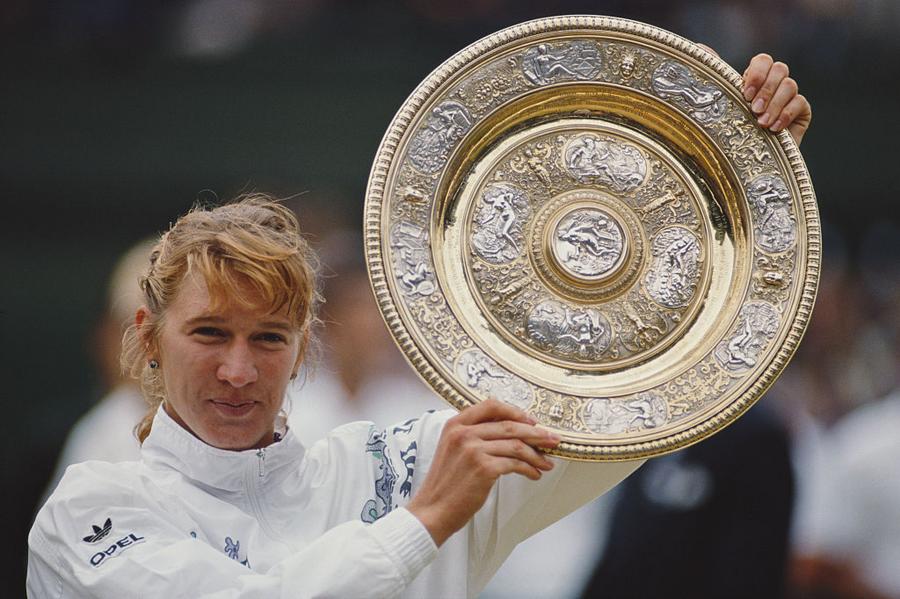 Steffi Graf is not just a tennis legend; she is the undisputed queen of the Golden Slam, a feat no other player—male or female—has ever matched in a single season. In 1988, the German powerhouse dominated the tennis world, winning all four Grand Slam titles—Australian Open, French Open, Wimbledon, and US Open—before capping off the historic year with an Olympic gold medal in Seoul. This unparalleled achievement cemented her legacy as one of the greatest athletes in the history of the sport.
Steffi Graf is not just a tennis legend; she is the undisputed queen of the Golden Slam, a feat no other player—male or female—has ever matched in a single season. In 1988, the German powerhouse dominated the tennis world, winning all four Grand Slam titles—Australian Open, French Open, Wimbledon, and US Open—before capping off the historic year with an Olympic gold medal in Seoul. This unparalleled achievement cemented her legacy as one of the greatest athletes in the history of the sport.
### The Path to Greatness
Born in Mannheim, West Germany, on June 14, 1969, Steffi Graf displayed prodigious talent from an early age. Introduced to tennis by her father, Peter Graf, she quickly rose through the junior ranks. By the time she turned professional in 1982 at just 13 years old, it was clear that she was destined for greatness.
Her early career saw steady progress, and in 1987, she claimed her first Grand Slam title at the French Open, dethroning world No. 1 Martina Navratilova. That victory marked the beginning of an era dominated by Graf’s aggressive baseline play, lethal forehand, and incredible footwork.
### The Historic 1988 Golden Slam
The year 1988 remains unmatched in tennis history. Graf began her campaign by clinching the Australian Open, defeating Chris Evert in the final. She then stormed through the clay courts of Roland Garros, securing her second French Open title with a crushing 6-0, 6-0 win over Natasha Zvereva—the most one-sided Grand Slam final in history.
Wimbledon was no different, as she triumphed over Navratilova in a thrilling three-set final, proving she could dominate on grass as well. The US Open followed, where she overcame Gabriela Sabatini to complete the traditional Grand Slam.
Yet, Graf’s mission was not complete. She traveled to Seoul for the Summer Olympics and, once again, defeated Sabatini in the gold medal match. With that victory, she accomplished what no player before or since has managed in a single season—a **Golden Slam**.
### The Legacy of a Champion
Steffi Graf’s dominance did not stop in 1988. She continued to amass titles, finishing her career with 22 Grand Slam singles titles—third-most in history, behind Margaret Court and Serena Williams. She spent **377 weeks as the world’s No. 1 player**, the longest reign in WTA or ATP history.
Her playing style revolutionized women’s tennis. Graf’s powerful forehand, often referred to as her “Fraulein Forehand,” was one of the most feared weapons in the game. Combined with her speed, agility, and mental resilience, she set a new standard for excellence.
Despite her on-court ferocity, Graf remained humble and private off the court. She retired in 1999, leaving the sport while still ranked No. 3 in the world. She later married fellow tennis great Andre Agassi, with whom she has two children.
### A Record That Stands Alone
More than three decades have passed since Graf’s Golden Slam, yet no player has come close to replicating her feat. Even in an era dominated by the likes of Serena Williams, Roger Federer, Rafael Nadal, and Novak Djokovic, the Golden Slam remains a one-of-a-kind achievement.
Steffi Graf’s name will forever be synonymous with tennis greatness. Her remarkable career, highlighted by the 1988 Golden Slam, is a testament to her unparalleled talent, work ethic, and mental fortitude. She did not just win—she redefined what was possible in the sport, earning her rightful place as the **Golden Slam Queen**.
